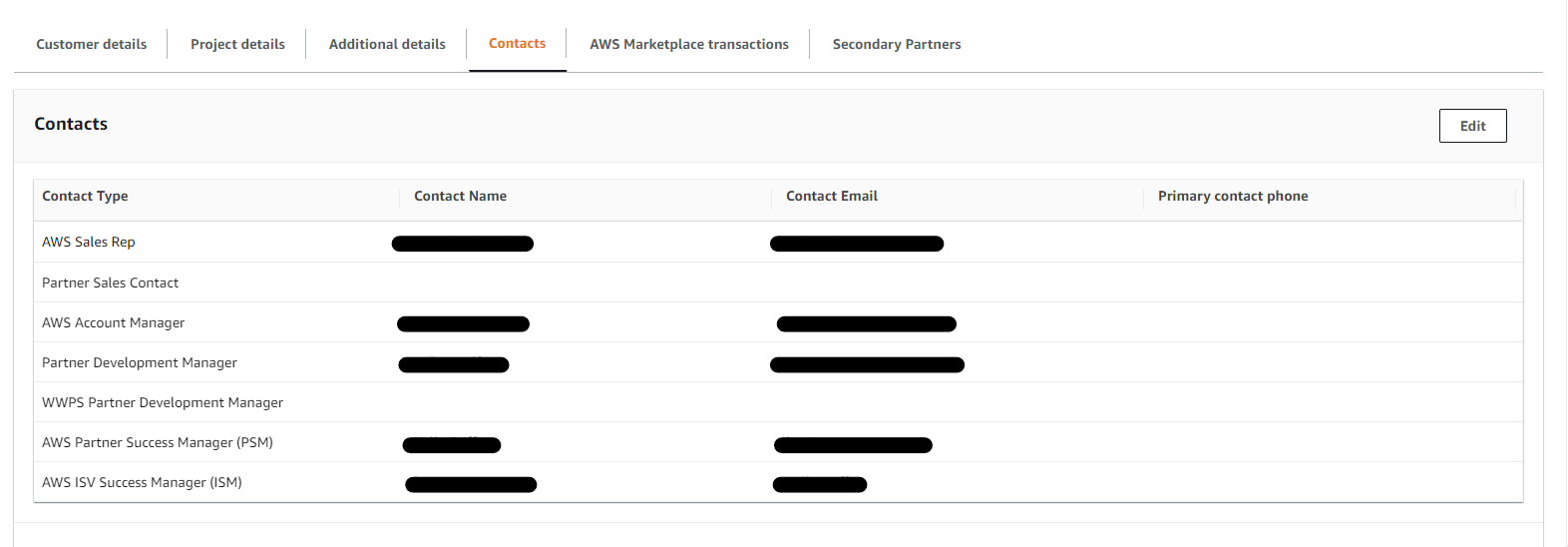
This module will take you through a few basic things that you can do to raise your profile within the AWS partner network to increase your visibility to both customers and AWS sellers.
It is highly recommended to first tackle the Reaching AWS Select Tier guide.
Defining your value in the AWS Partner Network
Globally there are 130,000+ AWS partners and with more than 5,000 alone across A/NZ is crucial that your business stands out from the crowd.
To do this it is important to recognise that saying 'no' can be be a powerful strategy for communicating differentiation. By carefully selecting the opportunities you pursue, you can focus on those where your expertise truly shines, helping you to stand out among competitors.
A common pitfall for up-and-coming partners, and partners trying to win favour from AWS is falling into the trap of claiming to "do all the things." To differentiate your practice, focus on clearly defining your niche and demonstrating how you stand out from the crowd. Identify and communicate specific outcomes, delivery methods, and market penetration strategies that set you apart from the countess other partners that deliver the same services.
Partners that stand out define their value proposition clearly. Highlight specific examples, demonstrating your domain expertise, hard-won experience, and a track record of wins that will resonate with potential customers.
Why do customers want to work with you? If you don't have a clear answer to this look at why customers chose you over competitors over the last 12 months, analysing this will help you to define your unique selling point.
It is important to recognise that technical capability is not the key deciding point for a customer. Whilst you may value this internally its not what will inspire a customer to choose to work with you. What customers want to see is domain expertise, and your hard won experience helping other customers like them solve similar business problems.
Your value is the outcome you enable for a customer, not the services you deliver.
Take for example a partner who does migrations.
There are many partners who's value proposition is "we are the best at doing migrations!", however this is not a compelling narrative for a customer. The migration isn't the end state the customer is looking for, they may not even know that they need to migrate to cloud. The end state is that the customers business problem has been solved. Migration services and capability, whist important, can be undifferentiated if not tied to broader business outcomes. A customer isn't moving to the cloud because they want to, they are migrating to the cloud because of the value that it provides and the business problem that it solves.
Consequently, when defining your value, you should help to connect the dots between a customer's business problem and the migration solution. Rather than just offering migration services, highlight how you align with specific business objectives, accelerate outcomes with your own frameworks and processes, and deliver meaningful results.
How to engage with AWS Sellers
Finding the right person
Partners, both new and experienced often express frustration that they don't know who the relevant people are within AWS or how to contact them. The answer to this is ACE (Amazon Customer Engagements) found in partner central.
If you don't know what this is or how to use it you should book an ACE enablement session with Luke.
The key thing to highlight here (though it may seem obvious), is that AWS don't have visibility of your CRM. If you are not using ACE, there is no way for AWS to know the kind of work you are doing and which customers you are supporting. As far as the sales team are concerned there is no track record of you delivering successful outcomes for customers using AWS services.
Partners should lodge and share every customer opportunity with AWS using this collaboration tool. By doing so each opportunity will be routed to the relevant customer account manager/industry/vertical sales rep. Under contacts you will then be able to find the contact details of the relevant sales rep for that customer/opportunity.

If you use the ACE tool proactively, it is likely that AWS account managers will get in contact with you to find out what you are doing and how they can help to accelerate the opportunity (funding, technical support etc). However even if they don't you should use this information to contact the relevant reps and get some sales time in.
Each rep manages a patch in some way similar to the customer you have the opportunity with, either industry or vertical. So it is important that they are not only aware of the outcomes you are delivering for this customer but also you are doing already but also how you can support other customers that sit in their patch.
How to communicate your value
When engaging with AWS, it's essential to shift from a selling mentality to an educating one.
AWS wants to position partners to the right type of customer, so partners need to be specific with who the right customer is and why.
To do this you need to educate AWS sellers and partner teams on how you differentiate your practice (migrations, data analytics etc.) from the others that offer it. If you can clearly differentiate you will become relevant to certain customers who are looking for specific outcomes. If your not able to do this you will likely be put into the 'we do all the things' bucket mentioned above and forgotten about when an opportunity comes along. AWS need to be clear in their mind when recommending a partner to a customer; the outcomes you deliver, the way you deliver (frameworks/processes), and the experience you have servicing that industry or vertical.
When connecting with the AWS teams you should treat them as though they are a new starter in your sales team. Rather than bombarding them with a list of services and certifications, focus on explaining how your approach delivers specific outcomes. Speak of the results you deliver and the processes you use to get there, not just your capabilities. You need to enable them to evangelise your business to customers and clearly explain to them the outcomes other customers have achieved becuase you were there.
when engaging with AWS sales teams, talk to them like they are an extension of your sales team, what are things you did and the outcomes achieved for the customer because you were there. telling a story to the sales team is what they will remember. what is the WHY?
Partners think of engaging with AWS as marketing and scare marketing content, you need to educate sellers to advocate on your behalf. so can put the right customers and partners together
Creating a Compelling Partner Profile
Once you have been recognised as a select tier partner your profile will become public facing on the AWS Partner Solutions finder website. This will go a long way in setting
Why: AWS drives customer traffic to PSF as the primary place to
learn more about confirmed AWS Specialization Partners through global campaigns.
Creating an AWS Microsite
Creating a dedicated AWS microsite will give you space to describe your offering and share details of your partnership, customer success stories, use cases, industies served and links to case studies.
Having this dedicated space will provide a key differencation mechanism and help customers find and validate your AWS specialisation
Suggested landing page outline partners may consider:- Why they care (benefits of using the product)
- What they get (tangible, specific outcomes, capabilities)
- What an engagement looks like(provide details on better together story, why its good for the user that the partner is on AWS)
- Call to action (how does the customer learn more)
Please consider the following best practices when building your microsite:
• Make sure it’s easily discoverable and accessible from your company’s home page
• Highlight your partnership with AWS
• Add your badge created in APN Badge Manager (Go to partner Central-Market-Badge manager to download)
• Provide details about your offerings validated through AWS Specialization Programs
• Include link(s) to AWS public case studies (Customer references)
Example Websites:
- https://my-compass.io/AWS/
- https://secondfront.com/solutions/aws-govcloud
- https://www.emopti.com/aws-telehealth
- https://www.solodev.com/aws/
Case Studies
In the AWS partner network, raising your profile involves more than just marketing; Its about story telling and sharing your expertise/learnings that resonate emotionally with your audience. A good case study is a powerful tool to have in your arsenal. it is an artefact tha can be used in a number of different contexts and will help to validate your expertise solving customer problems with AWS.
The importance of case studies
Case studies are not just about showing off your capability but why you matter; What was the customer able to achieve because you were there. You story should resonate with the audience and for any potential customer reading you want them to identy to the problem solved and say "hey, that's me!". A good case study will create a narrative
Partner Battle card
Leveraging AWS Marketing Central
- Posted In:
- AWS



